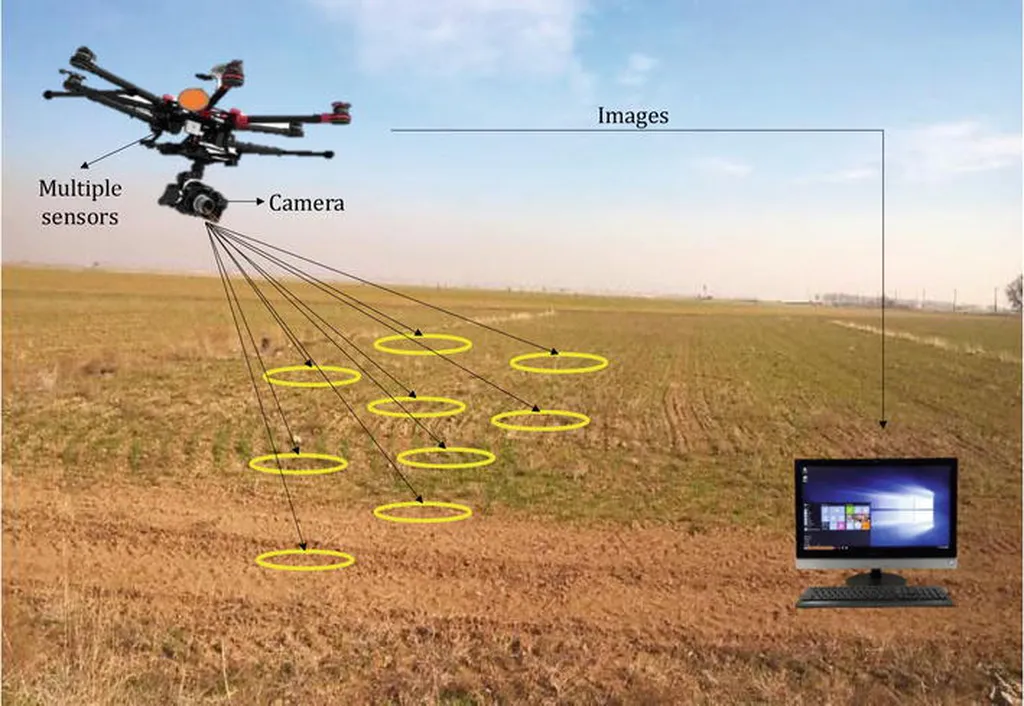In the heart of arid regions, where water is scarce and soil salinization threatens crops, farmers face an uphill battle. But a recent study published in *地球与行星物理论评* offers a glimmer of hope, demonstrating a novel approach to monitoring soil moisture in saline environments, which could revolutionize agricultural practices in oasis farmlands.
The research, led by Tianbao Huang from the College of Water Conservancy and Architectural Engineering at Shihezi University, focuses on the use of ground penetrating radar (GPR) for soil moisture inversion in saline soils. Traditional GPR methods often falter in high-conductivity saline soils due to electromagnetic wave attenuation and scattering. However, Huang’s team has developed a multi-scale saline soil model based on elliptical random media, integrating forward simulations with field experiments in Xinjiang oasis cotton fields.
The study compares the performance of different antenna frequencies and early-time signal indices, including carrier frequency amplitude (CFA) and average envelope amplitude (AEA), in saline soil moisture inversion. The results are promising. “Both early-time signal methods maintain stable inversion accuracy in saline soils with conductivities up to 0.36 S/m,” Huang explains. This means that GPR early-time signal methods could be a viable approach for quantitative soil moisture inversion in highly saline environments.
The research also highlights the importance of choosing the right antenna frequency and signal index. The 250 MHz low-frequency antenna showed superior depth adaptability and anti-interference capability for monitoring the 0-30 cm plough layer, while the 1000 MHz antenna was more sensitive to scattering effects from small-scale surface heterogeneities. The CFA index demonstrated higher sensitivity to dielectric constant variations under low soil moisture conditions, whereas the AEA index exhibited enhanced stability in high moisture environments.
This study is a significant step forward in the field of agritech. By providing an optimized strategy for GPR early-time signal saline soil moisture inversion indices tailored to different degrees of soil heterogeneity and moisture conditions, it paves the way for precision water-salt management in arid oasis agriculture. The practical applicability of 250 MHz antennas combined with CFA and AEA indices in oasis farmland environments has been validated through field experiments, offering innovative technical support for farmers in these challenging environments.
The commercial impacts of this research could be substantial. With accurate soil moisture monitoring, farmers can optimize irrigation practices, reduce water usage, and mitigate soil salinization. This is particularly crucial in arid regions where water scarcity is a persistent challenge. The study’s findings could also inform the development of new GPR technologies tailored to the unique needs of saline soil environments, opening up new avenues for research and innovation in the agritech sector.
As we look to the future, this research shapes how we approach soil moisture monitoring in challenging environments. It underscores the importance of tailored solutions and the potential of integrating advanced technologies like GPR into agricultural practices. With further development and refinement, these methods could become a cornerstone of precision agriculture, helping farmers worldwide to overcome the challenges of water scarcity and soil salinization.

